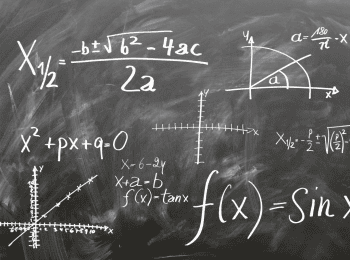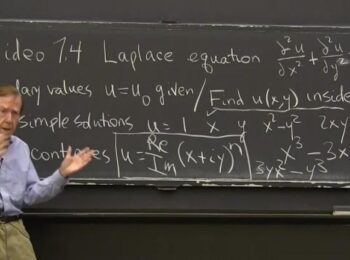If you’ve been asked to find a limit by your teacher, there are a range of different methods that you can use. It’s much simpler than it sounds and at the end of this guide, we have a nifty strategy that you can follow so that you’ll always know which method to use and when.
Finding limits isn’t easy, and a lot of people struggle with it. If this is you, don’t worry, by the end of this guide, we’ll have you finding limits in a few minutes at most. Read carefully and try to follow along, but don’t be afraid to start from the beginning to perfect your technique and to memorize each of the strategies properly.
Why Would You Want to Find Limits?
Limits are incredibly essential, and without them, we would be unable to do more advanced forms of calculus. A limit is the limit of a function f(x) as x approach c but never reaches it. Remember, x can approach c from either side. Picture a graph; it can come from either side of the axis.
Limits allow us to find out how a function will behave even if it doesn’t exist at a specific value of x. The result is that finding limits will allow you to derive the angle of a slope at a given point, even if you don’t have a specific value of x for every point along the line. Without knowing how to find limits, we would have little information about the gradient between points.
If we take the function f(x) = x – 1 / x – 1 and then imagine that x could be any number.
We know that if x = 1 the function would look like this:
f(1) = 1 – 1 / 1 – 1 which would equal 0 / 0.

Image by Edmund Fung from Pixabay
The result is that when x = 1, the function itself is undefined because the fraction 0 / 0 is undefined. On a graph, this would look like a straight line across, parallel to the x-axis, but there would be a gap where x = 1 because it’s just not defined. But what if we wanted to know what the function was when x = 1?
Well, we can’t do it. But what we can do is to get as close as possible to x = 1 so that we can know approximately what the value of the function is at that point. This idea is necessarily a limit. It’s the idea of being able to get as close as possible to an undefined point so that we can approximate it with a high level of accuracy.
Finding the Limit by Plugging in X
The first technique that we’ll look at is plugging x into the function to see the limit. In an ideal world, this would work all of the time. Therefore, we always start with this technique because it’s the simplest and allows us to get more information about what to do next. The idea is that you make x equal to the number it ’s approaching.
So, if we are trying to find the limit as we approach 2, we make x = 2 and then run the function.
When you do this, you’ll get one of three results:
-
f(a) = b / 0 where b is not zero.
-
f(a) = b where b is a real number.
-
f(a) = 0 / 0.
In the first circumstance, you’ve probably found an asymptote. An asymptote is when a line continually approaches a given value, but it will never reach it at any finite point.
In the second situation, you have probably found the correct limit through the substitution method.
Finally, in most complicated questions you will end up with a situation where the function is undefined, and therefore you’ll need to try other techniques. If this is the case, we will need to rearrange the function so that we can consider the limit in an identical but differently arranged form using one of the following three techniques.
Factoring Method
Factoring is a great method to try and is often one of the easiest to learn because it relies on skills that you’ve already practiced. If you’ve already tried to plug in a number have ended up with 0 / 0, you need to start factoring.
Often you’ll see that either the numerator or the denominator is more ‘friendly’ to factoring. Usually, x with the highest power is the best place to start. Let’s consider the following equation:
x^2 – 6x + 8 / x – 4 where x is approaching 4.
In this example, the numerator is the only place for you to factor. It’s also obvious because of the x^2 which can factor. In this case, we can factor to:
(x – 4)(x – 2) / (x – 4)
As you can see, we can then cancel the two matching x – 4 on both the top and the bottom. Pretty simple, right? It won’t also be this easy, but if you continue to factor you can often find places to simplify the expression.
This simplification leaves us with:
f(x) = x – 2 where x is approaching 4.
If we try to substitute 4 into the equation now, you’ll find the f(x) = 2. See, by factoring you’ve shown that the equivalent function has a specific value and that value is 2 when x is approaching 4.
If you were to create a graph of this function, you would still see a gap where x = 4 because the original equation is still undefined. However, you’ll know that when approaching 4, the function equals 2.
After factoring, you might find that there is no way for you to cancel and simplify. In this case, you should try another method to ensure that there is no limit of the function at the specific value of x.
Rationalizing the Numerator
The third technique requires you to rationalize the numerator so that you can try substitution again. You’ll know if you should rationalize the numerator because you’ll see a square root on the top and a polynomial expression on the bottom. Let’s look at the following example:
f(x) = sqr(x-4) – 3 / x – 13 as the function approaches 13.
We know that substitution fails when you get 0 in the denominator, and therefore substitution would fail in this example. Factoring would also fail because there is no polynomial to factor in this example.
However, if you were to multiply the numerator and denominator by the conjugate of the top (numerator), then you’ll be able to cancel and find the limit.
The conjugate of the numerator is: sqr(x – 4) + 3 and therefore we can multiply through to get:
(sqr(x – 4) – 3)(sqr(x – 4) + 3) / (x – 13)(sqr(x – 4) + 3)
We can then FOIL the numerator to get the following:
(x – 4) + 3sqr(x – 4) – 3sqr(x – 4) – 9
When simplified the above expression will become x – 13 because the middle terms cancel and then you can combine like terms.
If we go back to the full equation you can now see that we have:
(x – 13) / (x – 13)(sqr(x – 4) + 3)
The terms cancel, and we have:
1 / (x – 13)(sqr(x – 4) + 3)
From there, we can plug in 13 into the function because we have all of the unknowns on one side of the fraction. The result is that the limit is ⅙.
Trig Identities
So far we’ve only looked at situations which don’t include any trigonometry. These require unique methods like factoring and conjugates to ensure that you can simplify and be able to easily plug in a number for x to find the limit. We want to do the same with this equation, but it contains trigonometry which complicates things a little.
For you to solve these equations, it’s vital that you know all of the trig functions so that you can rewrite equations and more effectively address them.
The most common are as follows:
Cos (x) = 1 / Sin (x)
Sec (x) = 1 / Cos (x)
Cot (x) = 1 / Tan (x)
It’s highly likely that you’ll also need to know the double angle identities in order to simplify more complex functions.
Sin (2a) = 2Sin(a)Cos(a)
Cos (2a) = Cos^2(a) – Sin^2(a)
Tan (2a) = 2Tan(a) / 1 – Tan^2(a)
This equations might seem confusing, but they are actually very simple. They are each used for different purposes, but when finding limits we only need to know them for rewriting equations.
Let’s look at the following example:
Sin (x) / Sin (2x) when x is approaching 0
We can use the double angle identities formula to simplify to:
Sin (x) / 2Sin(x)Cos(x)
From there, the Sin(x) can cancel and we are left with:
1 / 2Cos(x)
If we plug in 0 as x, we will get ½ because cos(0) = 1 and therefore you have 1 / 2*1 which is ½.
The Strategy to Finding Limits in Calculus
Now that we’ve covered all of the tactics that you can use to find limits let’s discuss which you should use and when. There is a straightforward rule. You should always do a direct substitution first.
If you get f(a) = b / 0 then you have an asymptote.
If you get f(a) = b then you have a limit.
If you get f(a) = 0 / 0 then you should try factoring, rationalizing the numerator or trig identities depending on which seems most likely to work.







